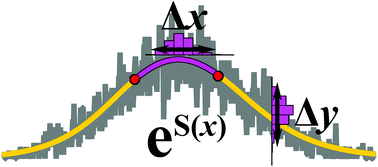Model independent peak fitting and uncertainty assignment for high-precision time-of-flight mass spectrometry
Abstract
A procedure is introduced to extract the time-of-flight probability density distribution for ions of one type using an accumulated ion peak as a template for use in the fitting of time-of-flight peaks of co-accumulated ions. We demonstrate the use of logarithmic splines and discuss the statistical criteria for the selection of the spline smoothing parameter to obtain a smooth function for approximating such an ion peak. Furthermore, a “Bootstrap” method is proposed to determine the uncertainty of the fitted time-of-flight values, which is calculated using the extracted peak shape via a repeated statistical experiment. The developed procedure is validated against time-of-flight data obtained in a previously reported experiment. It is shown that atomic masses derived from our newly proposed methodology are in good agreement with those from the 2016 Atomic Mass Evaluation and the values determined using an analytically defined function (exponential-Gaussian hybrid), approximately matching the observed peak shape. In contrast to the previously used approach, our newly proposed methodology is a much more flexible, robust, and universal method for peak shape approximation, which can be applied to any peak shape.



 Please wait while we load your content...
Please wait while we load your content...